Category: Highlights — Published:
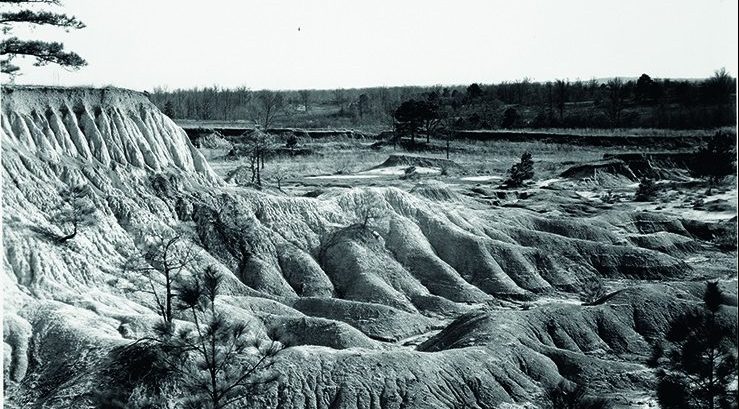
Walker Evans, Erosion, Mississippi, 1936, Silver gelatin print, 25 x 20 cm, Library of Congress press photograph, Collection David Campany, Handful of Dust Whitechapel Gallery 2017
A Handful of Dust is a visual journey through the motif of dust, from aerial reconnaissance, wartime destruction and natural disasters to domestic dirt and forensics captured by over 30 artists and photographers.
The show explores what dust has meant for art and society, weaving connections among artefacts and documents as far-ranging as old newspaper images, police photographs, postcards and computer generated imagery, as well as works by Surrealist and Conceptual artists.
Discover five key works from the exhibition below:
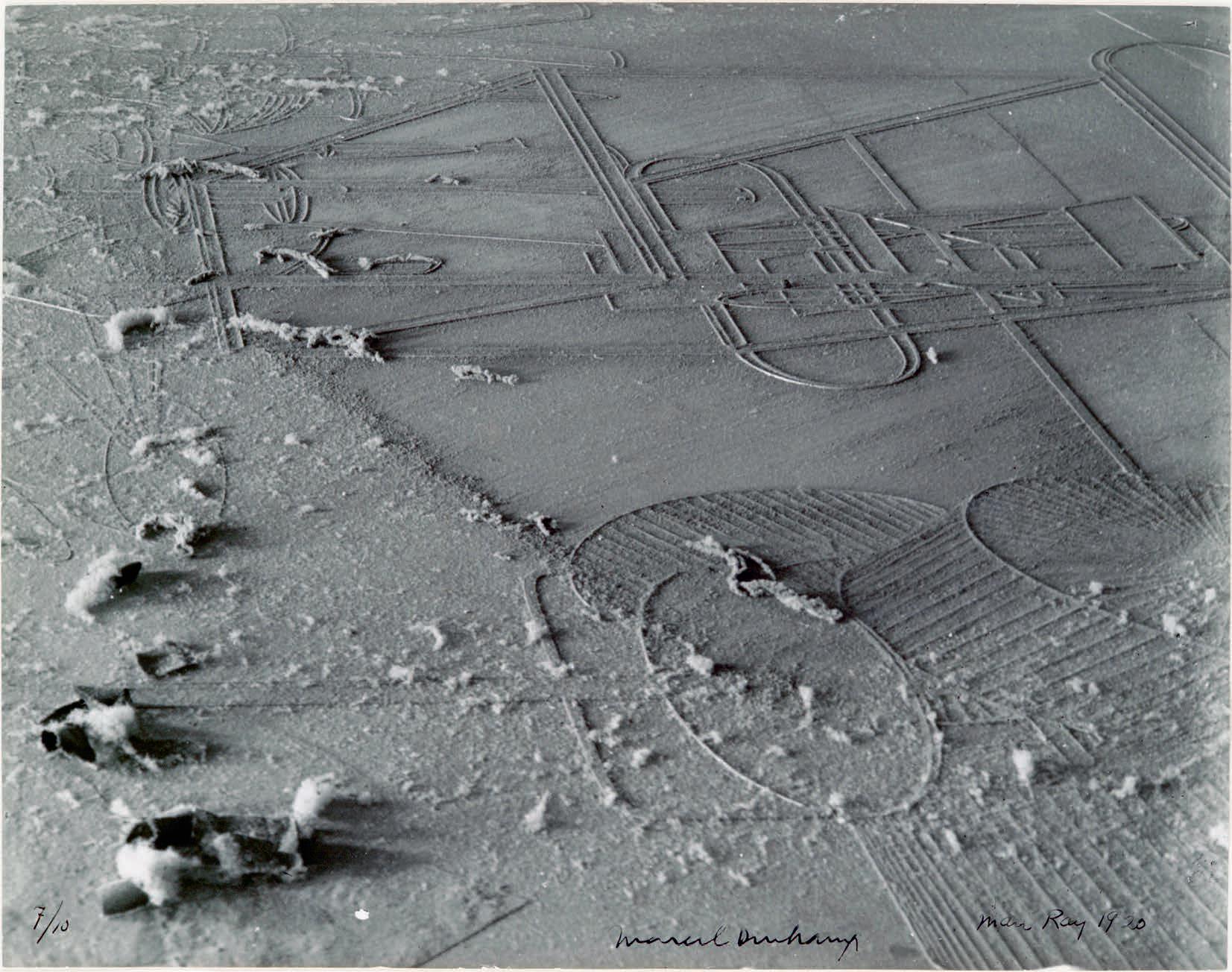
Man Ray/Marcel Duchamp, Élevage de poussière (1920) Gelatin silver print – printed c. 1968, © Succession Marcel Duchamp/ADAGP, Paris and DACS, London 2017, © Man Ray Trust/ADAGP, Paris and DACS, London 2017
The exhibition begins with an enigmatic photograph of dust ostensibly taken by Man Ray nearly a century ago. Élevage de poussière is a photograph of dust on the surface of a sheet of glass in Duchamp’s New York studio. This glass would later become Marcel Duchamp’s great work The Bride Stripped Bare By Her Bachelors, Even (1915–1923), also known as the Large Glass.
Between the World Wars, the photograph lived in avant-garde journals, each time presented a little differently. In 1964 the photograph was formally titled Dust Breeding, and signed by Man Ray and Duchamp. From there it began to haunt contemporary culture.
Conceptual artists of the 1960s and 70s were fascinated by its implications. It has often appeared in debates about photography’s status as index or trace, in exhibitions about abstraction and the use of impoverished materials, and even in discussions of landscape imagery.
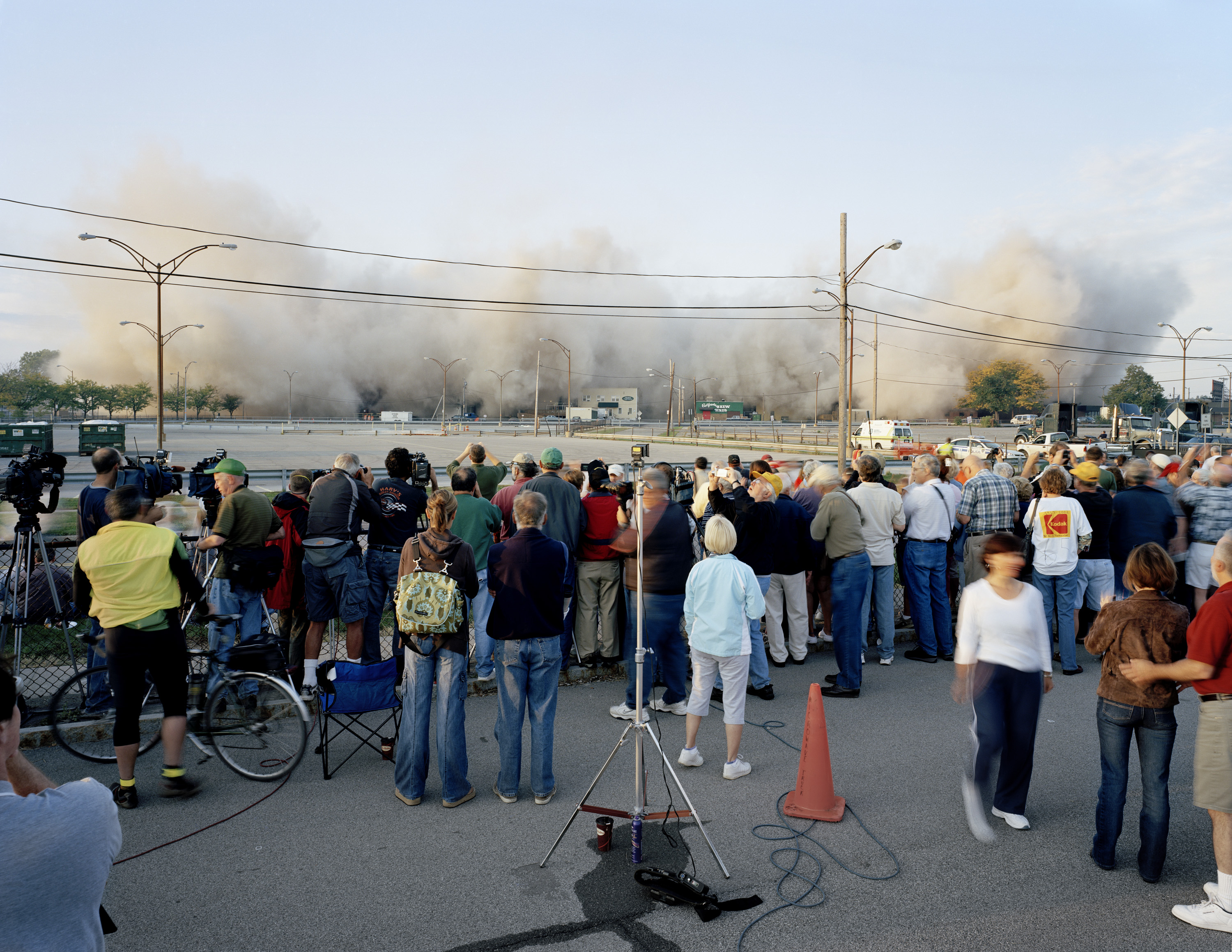
Robert Burley, Implosions of Buildings 65 and 69, Kodak Park, Rochester, New York [#1] (October 6, 2007) Pigment Print, 76.2 x 99.06cm, Courtesy the artists and Musée Nicéphore Niépce
Robert Burley declared about his photograph: “To stand in front of one of those film factories and watch it reduced to dust in a matter of seconds was sad, sublime and ironic all at once. I included the crowds in my photographs noting most everyone was documenting these spectacles with a digital capture device … of some kind—even though most had been employed by Kodak and worked in these buildings for the better part of their lives.”
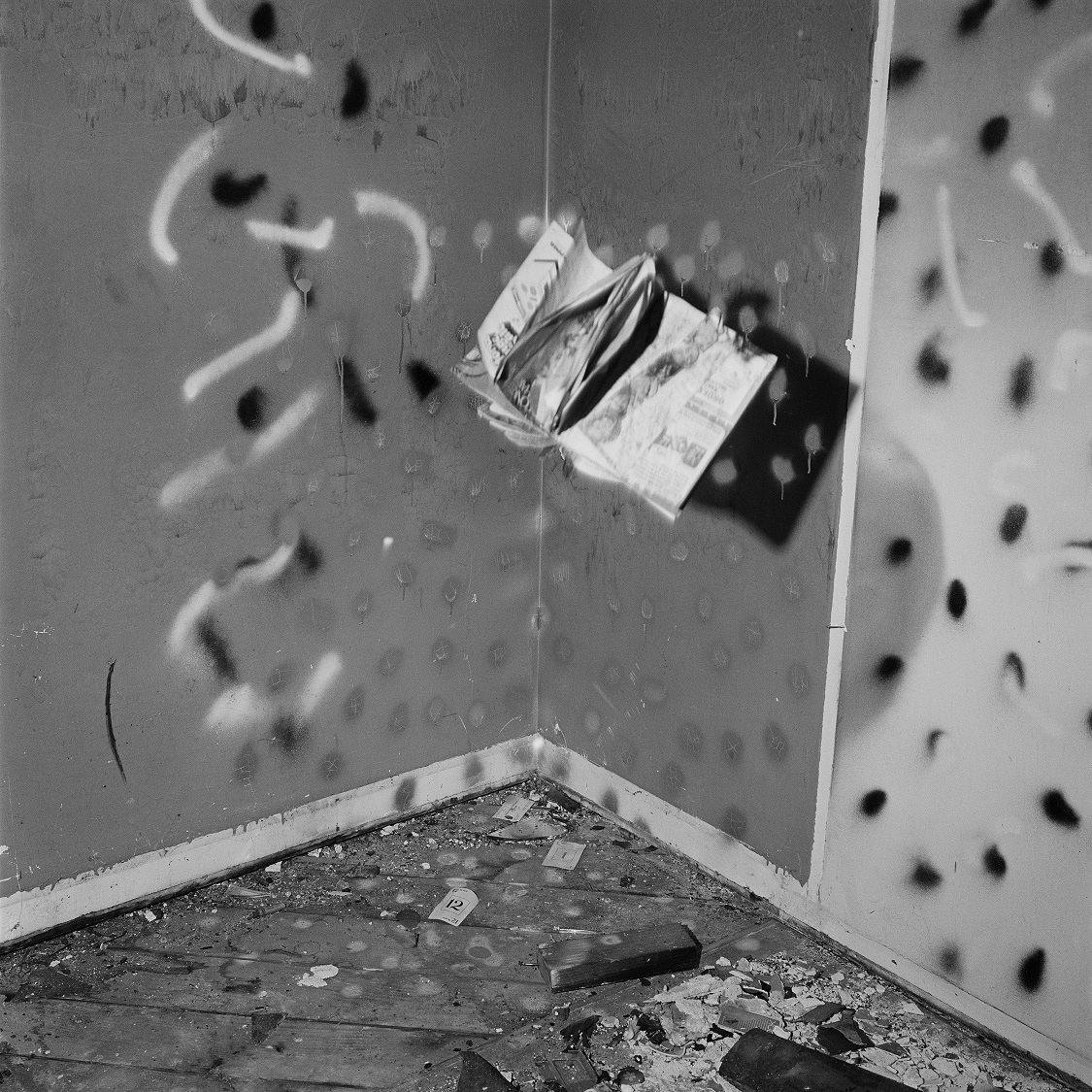
John Divola, Photographs from The Vandalism Portfolio (1974-5) Printed 1993, Silver gelatin prints on 50x40cm paper, © John Divola, Courtesy of Gallery Luisotti
Breaking into disused houses, John Divola turned arty vandal with an aerosol can, string and cardboard before photographing his interventions. Rich in narrative implication, Divola’s series Vandalism 1973–75 slip between forensics, performance, sculpture and art photography.
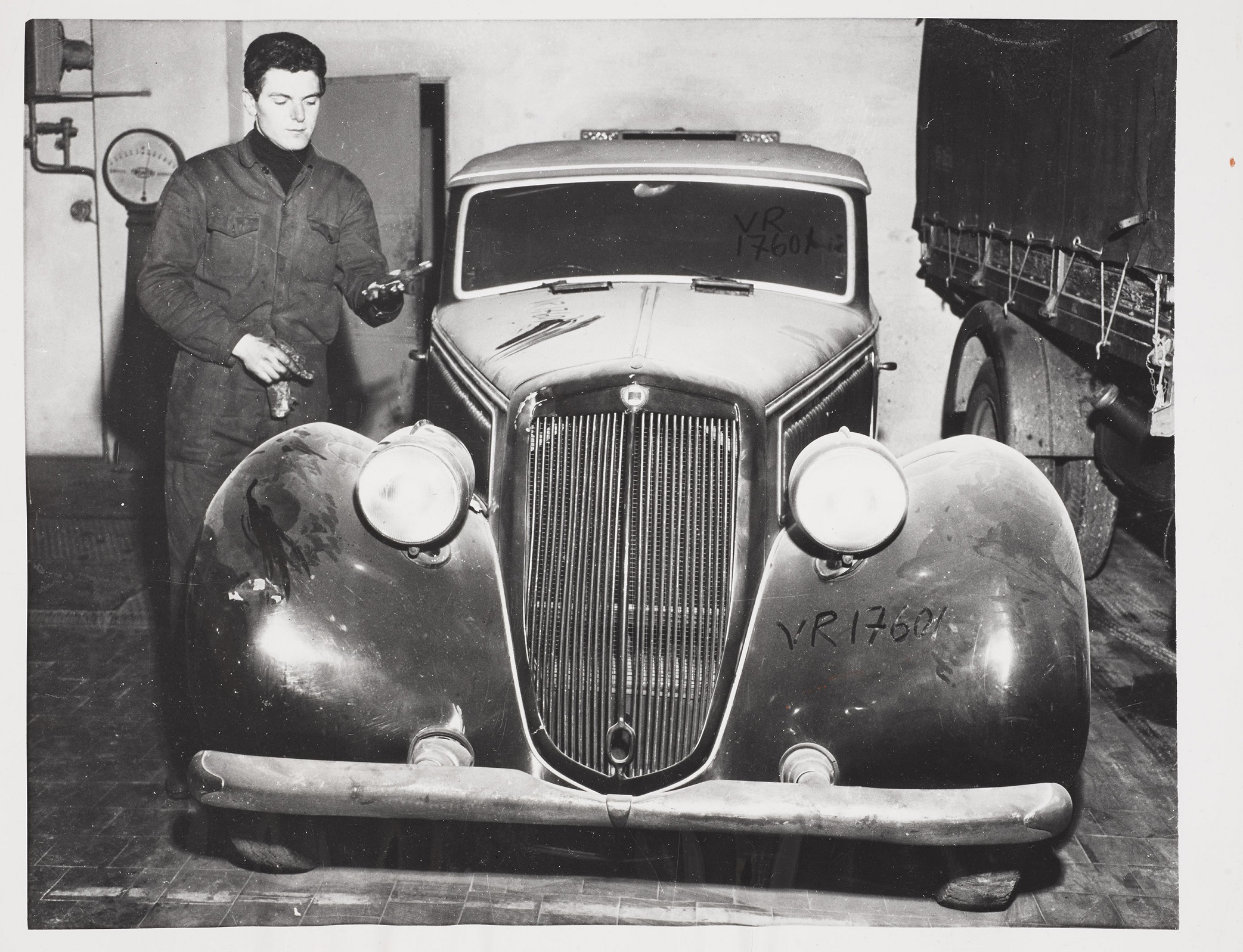
Photographer unknown, Benito Mussolini’s dust covered motor car languishes in a Milan garage ten years after his death, 1955, United Press Agency
This image was taken by an unknown photographer in 1955 and a note on the back of it reports: “Benito Mussolini’s car. A mechanic gets a dirty hand from the thickly dust-laden automobile abandoned in a Milan garage after it carried the late Italian dictator Benito Mussolini to his death. He was riding in it when captured by partisans and executed. A Lancia, licensed in Verona in the name of Carla Bianchi, can be claimed by the owner if he pays the 2,000,000 Lira parking fee for the ten years it has stood still. That’s almost twice the price of a new car. 12 April 1955″
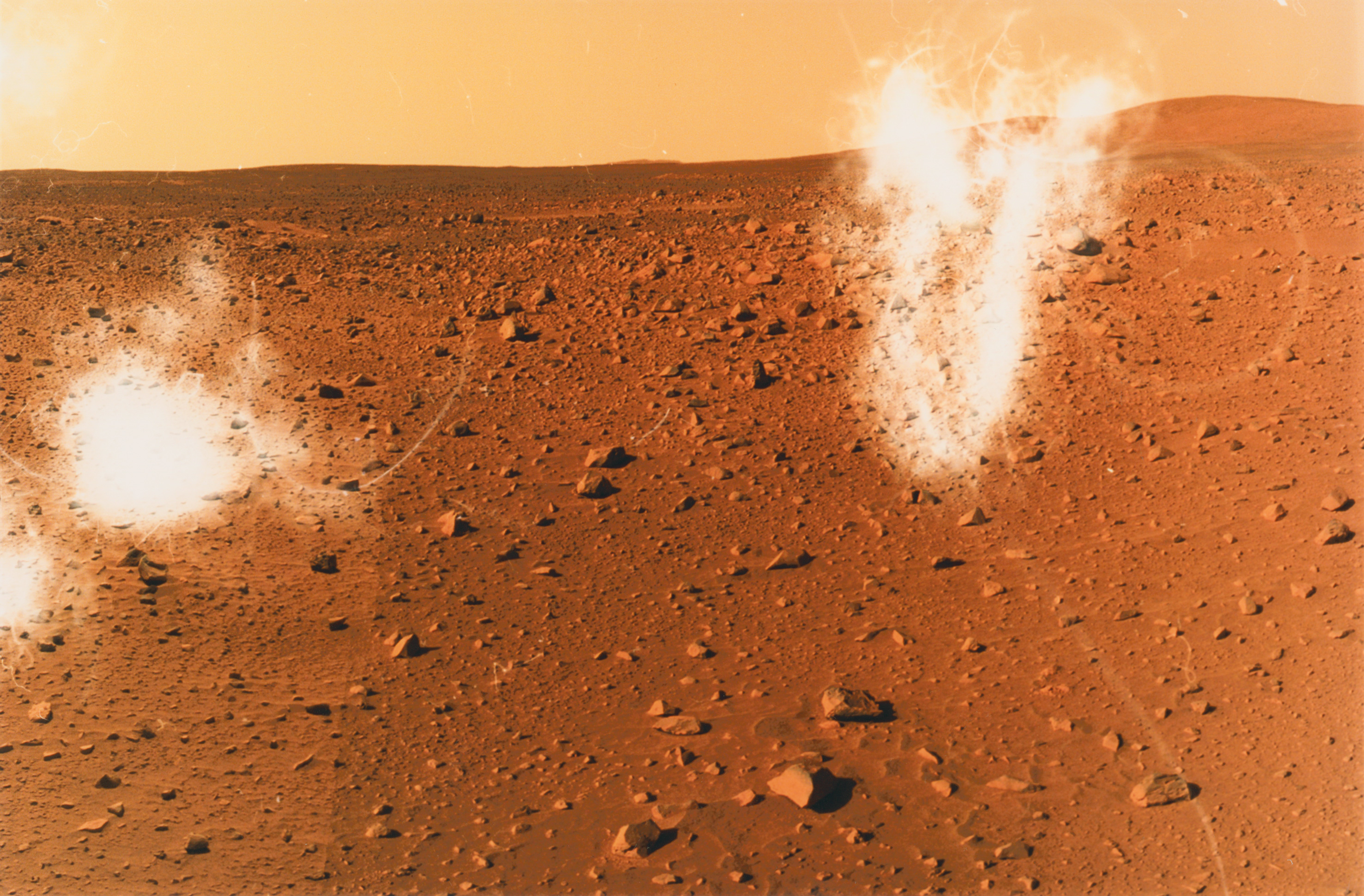
Eva Stenram, Per Pulverem Ad Astra, 2007 34 x 23 cm, C-print, Unique prints, Courtesy Eva Stenram, Source image courtesy NASA/JPL-Caltech
To produce her series Per Pulverem Ad Astra 2007, Eva Stenram downloaded high-resolution images of Mars from NASA’s website. These files were transferred to colour negative film. The negatives were then left under the artist’s bed to gather dust, before being used to make prints. The cosmic and the domestic become one.
Stenram writes: “The resulting marked image is a combination of extreme distance and extreme proximity, a simultaneous gravitational pull towards the earth, to the dust around – and by extension, towards death – and a pull upwards, into space, away from the earth, towards the attraction, both physical and fantastical, of Mars.”
The exhibition also includes work by Marcel Duchamp, Walker Evans, Robert Filliou, Mona Kuhn, Man Ray, Gerhard Richter, Sophie Ristelhueber, Aaron Siskind, Shomei Tomatsu, Jeff Wall and Nick Waplington alongside magazine spreads, press photos, postcards and film clips.
Visit A Handful of Dust at the Whitechapel Gallery, Galleries 8 & 9 from 7 June – 3 September 2017.